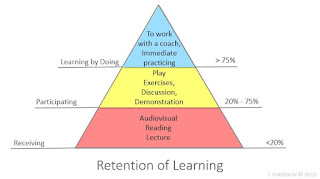It is more important how you say it, than what you say.
Every Director, Manager and Supervisor must understand this
statement to be an effective communicator and a trusted leader.
Don’t get me wrong, the message is important. However, the
spoken words (the literal meaning) only account for 7% of the total
message. In face-to-face conversations,
what we don’t say often screams the loudest. Very often, the tone of voice and
our body language are
combined to become the most powerful form of communication. However,
body language, which forms a large part of non-verbal communication, is often
used on its own, and is thought to be one of the most “telling” modes of
communication.
- Words (the literal meaning) account for 7% of the overall message
- Tone of voice accounts for 38% of the overall message
- Body Language accounts for 55% of the overall message
55% of our message is conveyed through body language
alone. This is a staggering number! How
effective would your message be if you ignored 55% of the “words”? Do you believe you can successfully compel people to action
if you disregard 93% of your message?
Learning the hard way…
As the COO of a manufacturing company, I was always on the
run to the next meeting. I would very often use the travel time, walking
through the facility as an opportunity to get my thoughts organized. Running
through different statistics, customer needs or other potential constraints
that are impacting our flow. I would arrive at gemba, organized and ready for a
productive conversation.
What I didn’t understand was how my body language was
sending the wrong message. Although I was in a good mood, and my spoken words
were almost always positive, they were in-congruent with my body language. Walking through the plant, head down, not
smiling, lost in thought, the perception was “Great, here comes Lance again,
and he looks ticked off. “ Nothing could be further from the truth, but my body
language was telling everyone that I was not engaging.
One morning, at a production meeting, one of the employees
asked me what was wrong. Totally confused, I asked what she was talking about;
she said I looked like I just went 12 rounds with Mike Tyson. Wow! what an eye
opener. After ensuring her that I was in a great mood and thanking her for
having the courage to ask, I changed my behavior. From that day forward, every
time I walked through the facility, my head was up, I was smiling, making eye
contact and saying hello to everyone on my travels. I began to focus on body
language just as much as spoken content and it made an enormous improvement in
the effectiveness of the communication.
My advice is to truly understand the power of the unspoken
word. Body language is an influential element in communication and is often
overlooked or undervalued. Understanding that only 7% of our message is
conveyed through the actual words, and focusing on tone and body language will
allow you to become a much more influential leader.











